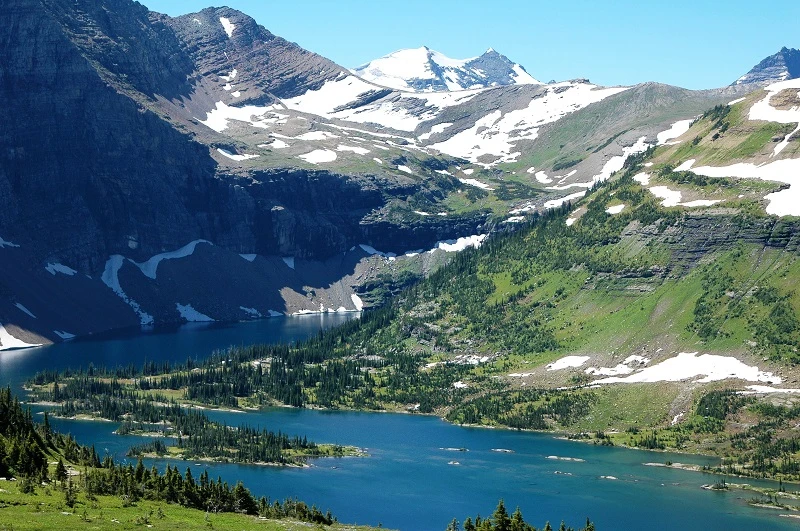
Glacier National Park is known as the “Crown of the Continent” for its glacier-capped mountains, bright blue lakes, breathtaking alpine landscapes, and some of the most thrilling hiking paths in the nation.
Put Glacier National Park on your agenda if you want to experience waterfalls, animals, and mountain slopes covered in a carpet of wildflowers and to capture the Glacier National Park photos. This is the kind of national park where getting out of the car and exploring is practically required.
You may go on a boat tour across Lake McDonald, kayak on Swift Current Lake, or choose one of the fantastic hiking routes that are spread out around the park and capture Glacier National Park photos.
The Best Time to Photograph Glacier National Park’s Breathtaking Landscapes
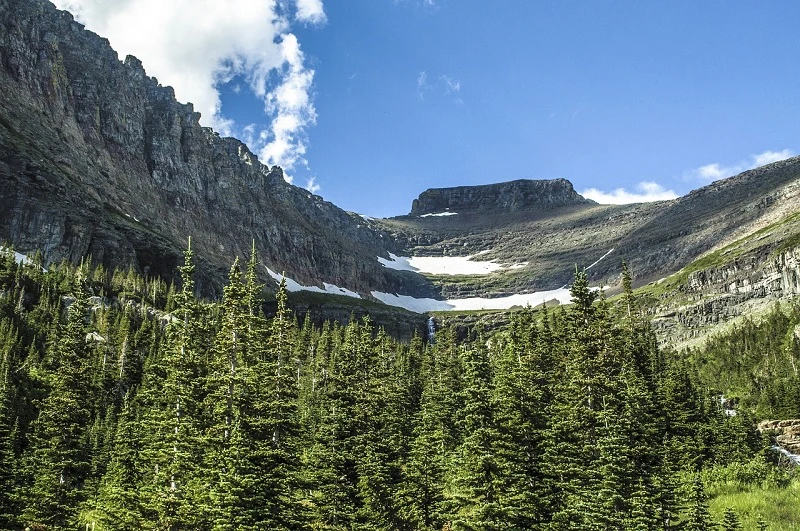
Glacier National Park has severe winters and warm summers. The Going-to-the-Sun Road, which runs mostly east-west through the park and passes through many of its most beautiful vistas, is only ever completely accessible from mid-June to mid-September.
Therefore, a summer or early autumn vacation is what you should aim for if you want to be able to travel this route, take in the scenery, and readily access the numerous hikes and photographic places that are related to the Going-to-the-Sun route.
Snow-capped summits, roaring rivers, and cascading waterfalls may be seen in the early summer, while high-elevation wildflowers can be seen in the mid-to-late summer.
Capturing Iconic Glacier National Park Photos
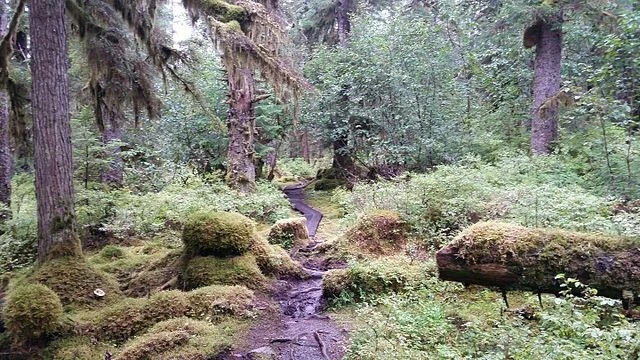
The easiest way to get across Glacier for photographers who want to explore as many different shooting spots as possible is at least partially by automobile.
Staying in hotels or campgrounds in a place like St. Mary gives you easy access to the Going-to-the-Sun Road and reasonably quick drives to picturesque places like Many Glacier, Two Medicine Lake, and even Canada’s Waterton Lakes National Park. Many of the best photo locations are located in the eastern half of the park.
But be ready to utilize your feet to assist you travel around if you want to get the greatest sights. If you’re prepared to veer five or ten miles from the paved roads, day treks in Glacier National Park photos may take you to some incredible sites.
Hiking in Glacier, which offers a fantastic collection of hiking information for the park, is a terrific resource for thorough hiking information.
A free hop-on, hop-off shuttle service that takes tourists to destinations along the Going-to-the-Sun Road is provided by Glacier National Park for individuals who don’t want to rent a car but still want to be able to travel between locations fairly fast.
Opening And Closing Dates
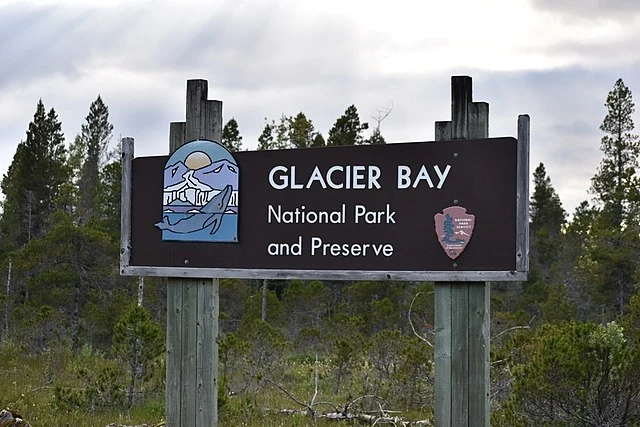
Going-to-the-Sun Road is only accessible during the summer. The rest of the year, it is covered in snow. The road often opens in the middle to end of June, however, this varies from year to year. Going-to-the-Sun Road finally opened in 2022 on July 13, which was a bit later than normal. It will debut on June 25th, 2021.
The opening day was July 13 in 2020, but COVID, not snow, caused the delay. Previously, it opened by the end of June (June 22 in 2019, June 22 in 2018, June 28 in 2017, June 16 in 2016, and June 19 in 2015).
Going to-the-By late September or early October, Sun Road shuts. The closure dates for the last several years are shown below: However, this early closure was brought on by a wildfire, unlike the dates 2020: October 9; 2019: September 25; 2018: September 29; and 2017: September 3.
Plan your trip to the area between early to mid-July and the end of September if you wish to travel the entire length of Going-to-the-Sun Road.
Ensuring Safety in Glacier National Park: Precautions, Packing Tips, and Wildlife Awareness
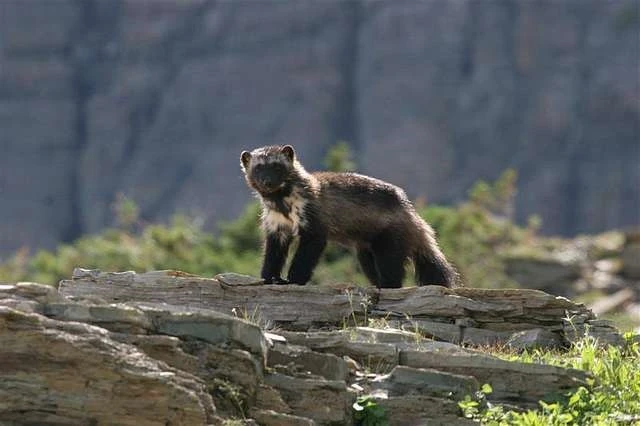
Glacier National Park Photos
The main priority while traveling to Glacier National Park is safety. Risks can include falling, drowning, dehydration, bad weather, encounters with wildlife, and more, depending on the time of year you visit.
No matter how beautiful the scenery is, safety should always come first. When you take a step that puts you too near to a cliff, you don’t want to be looking through the viewfinder. The following points of safety-related things should be on your packing list, but bear in mind that this is not an exhaustive list.
Layers of clothes (ideally quick-drying) Equipment for filtering water or providing water, Bear repellent, carry medical kit, carry a piece of rope in case you go down a hill and are unable to climb back up, bring a torch and more batteries, several tools lastly snacks and a sunscreen.
Before entering the park, make sure you are knowledgeable about the fauna there. Learn how to behave around wildlife before visiting Glacier National Park because it is home to grizzly bears, black bears, mountain lions, wolves, and other animals.
Visit the Glacier National Park website for information on the park and how to avoid potentially hazardous circumstances when around wildlife.
5 Must-see Spots For Glacier National Park photos
Swift Current Lake
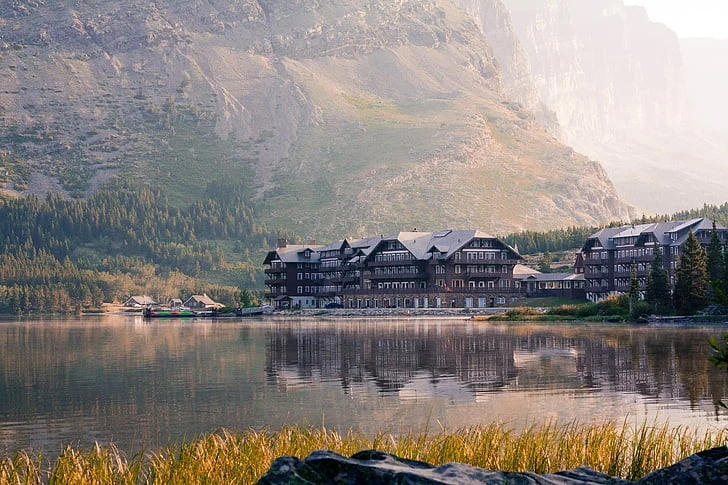
Swift Current Lake is conveniently reachable by automobile and is situated in the park’s Many Glacier region. Mount Wilbur and several other peaks in the Many Glacier region may be seen with striking clarity from the lakeshore close to the Many Glacier Hotel.
Swift Current Lake offers opportunities for both scenery and animal photography with its extensive coastline. Bring your lens collection, get inventive, and consider everything from an ultra-wide to a telephoto lens as it may be helpful here.
Visit Apakuni Falls or Iceberg Lake for other hiking locations which are close to Swift Current Lake.
Swift current Lake is an excellent spot for dawn and sunset viewing since it faces west and offers a panoramic view of Mount Wilbur. Beautiful alpenglow lights the mountains at sunrise on a sunny morning and a cloudy afternoon can provide a stunning sunset.
One of the best photo spots is right away off the road at Swift current Lake. You may park in the hotel’s parking area and go to the lake’s coast after a quick descent of a slope. However, the road going to the Many Glacier region is currently in rather a rough state, so be sure to give extra time to travel down it.
Grinnell Glacier Trail
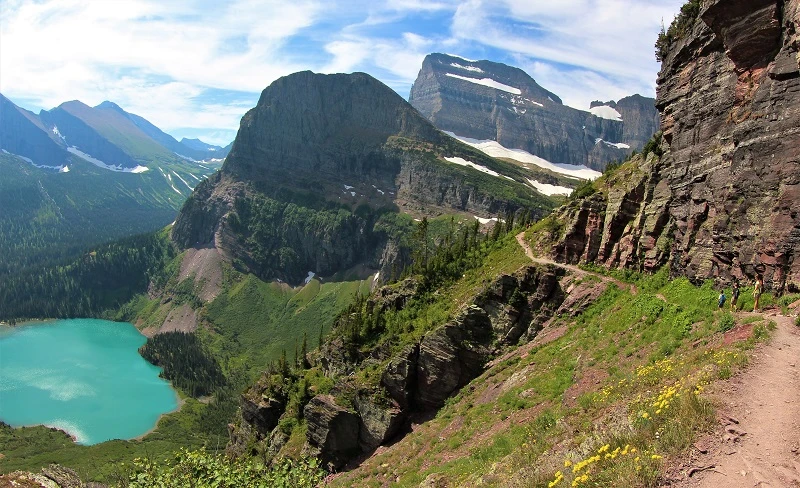
One of Glacier National Park’s most picturesque walks is the Grinnell Glacier Trail. To reach the glacier and lake after the hike’s 11-mile circuit and just under a 2,000-foot elevation increase, you need to be at least averagely fit.
However, because the majority of the climb is above the tree line and offers breathtaking vistas of mountains, glaciers, and turquoise lakes, the path is quite rewarding. For those who are terrified of heights, be advised that the route occasionally becomes constrained and clings to a cliff wall.
If you don’t believe you’ll be able to complete the 11-mile roundtrip journey, boats can ferry you across Swift Current Lake and Lake Josephine for a charge, cutting around 3.4 miles off the hike.
Additionally, if you don’t want to trek the entire out-and-back path, you may get some great vistas around three miles in from the start.
Bring bear spray and make noise on the route since the trek will take you through excellent grizzly bear habitat. Regarding lenses, it is discovered that the 24-120mm on my Nikon D750 was more than wide enough for the vistas from the route.
Due to probable animal encounters, a telephoto lens could also be a good choice but think carefully about how much more weight you want to carry on an 11-mile walk.
The Grinnell Glacier Trail begins at a roadside parking lot on Swift current Lake’s west side, in the park’s Many Glacier section. The track is signposted, making it easy to follow the few forks in the path you encounter.
Running Eagle Falls
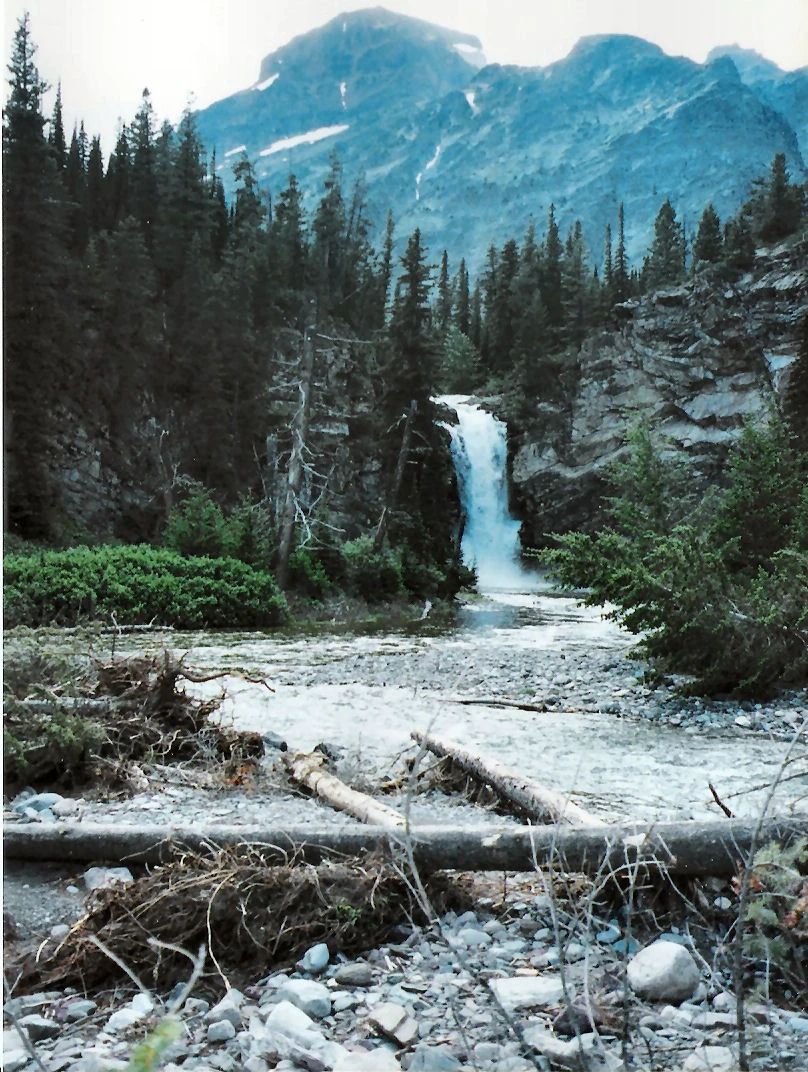
Running Eagle Falls, also known as Trick Falls, is a distinctive waterfall at Two Medicine Lake, making it simple to combine a trip there with one to Running Eagle Falls.
In periods of decreased water flow, the falls appear to tumble over the top of the cliff from below rather than from within a crevice in the rock face in front of you. A secondary fall, on the other hand, pours more conventionally over the top of the cliff above at times of strong water flow.
You are facing west while facing Running Eagle Falls, thus the falls will probably be in full sunshine early in the day. A day with a few more clouds might have allowed for some great light to seep into the top of the image, so head to the falls a few hours before sunset.
Running Eagle Falls should be a fantastic afternoon or evening location depending on the time of year so that you can catch it in the shadow. Remember that you could only get the “trick” perspective of the falls depending on how much rain or snowmelt occurred in the region before your visit.
A 0.3-mile walk leading from a parking area off Two Medicine Road leads to Running Eagle Falls. The path is fairly accessible and practically anyone may walk it. Keep in mind that during the busiest travel season, this can make it packed.
Lunch Creek
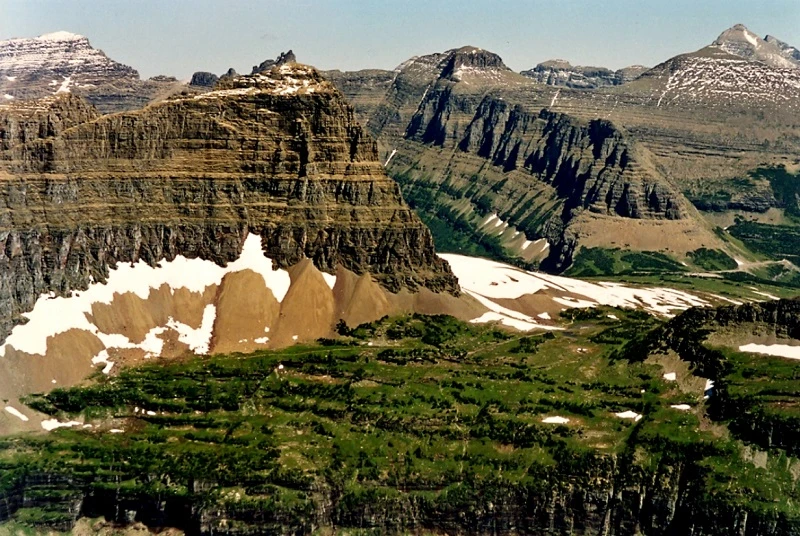
It is simple to stop at Lunch Creek because it is situated close to Logan Pass and the Going-to-the-Sun Road. North of Pollock Mountain, the stream flows down, offering a chance to frame the cascades in the front and the mountain top in the background.
While there is a fantastic series of cascades right next to the road, you can climb farther away from the road quite easily to discover many additional compositions and perspectives as well as avoid the crowds thanks to the stream’s mild ascent.
Plan on bringing something like a 16-35mm lens on a full-frame camera or equivalent unless you are only planning to shoot an intimate scene of the cascades because a focal length of 24mm on a full frame was just barely wide enough for a shot of the cascades near the road while still getting Pollock Mountain in the background.
The ideal times to visit Lunch Creek and Pollock Mountain are in the early morning or late afternoon light before the sun gets too high in the sky since you will have the sun at your back for most of the day.
A journey to Lunch Creek might benefit from cloudy days as well, but keep in mind that cloudy days could also obscure the sky behind Pollock Mountain.
Hidden Lake
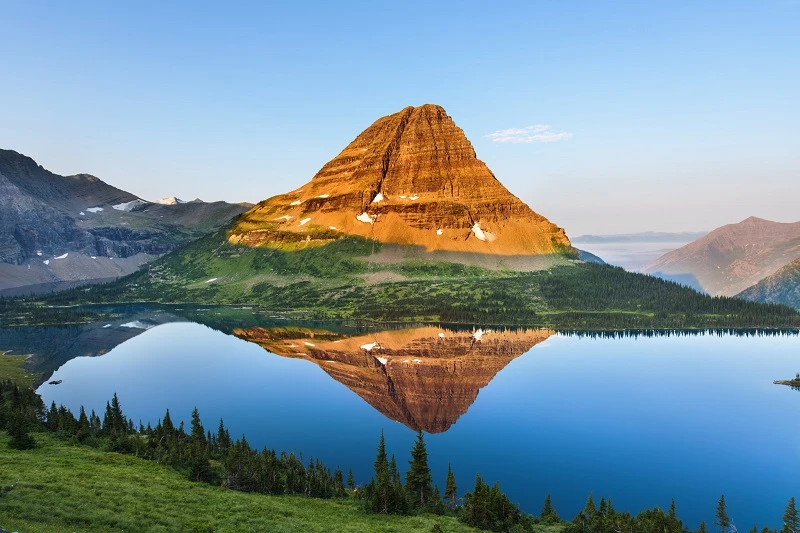
One of the most beautiful sights for Glacier National Park photos is Hidden Lake. About 1.3 kilometers, part of which is over a wooden boardwalk, separate the Logan Pass Visitor Center from the lake’s viewpoint.
Despite the short distance to the viewpoint, you will gain around 600 feet of elevation in the first two-thirds of the trip. The greatest views are undoubtedly from the region around or just past the overlook, while those who want a closer look at the lake can continue down the route from the viewpoint.
Bring all of your lenses on the Hidden Lake trek if you don’t mind the weight. Although the view from the overlook is a magnificent panorama that merits a lens as wide as 14mm or 15mm, you should also carry a telephoto because there may be wildlife down the walk.
Even while the view of Hidden Lake is breathtaking at any time of day, it seems more beautiful in the early morning and late evening.
Since the viewpoint has a southwest-facing vista, going there at night in late summer will help you capture the Milky Way. The Logan Pass and Hidden Lake region is a great bear habitat, so use caution at night.
Conclusion
Glacier National Park photos are one of a select few parks that many people love, the most out of all the parks. It’s difficult to top because of the abundance of stunning vantage spots and photo possibilities.
If you’re a photographer intending to attend, make sure to prepare ahead of time since you won’t want to waste any time once you get to the park.
